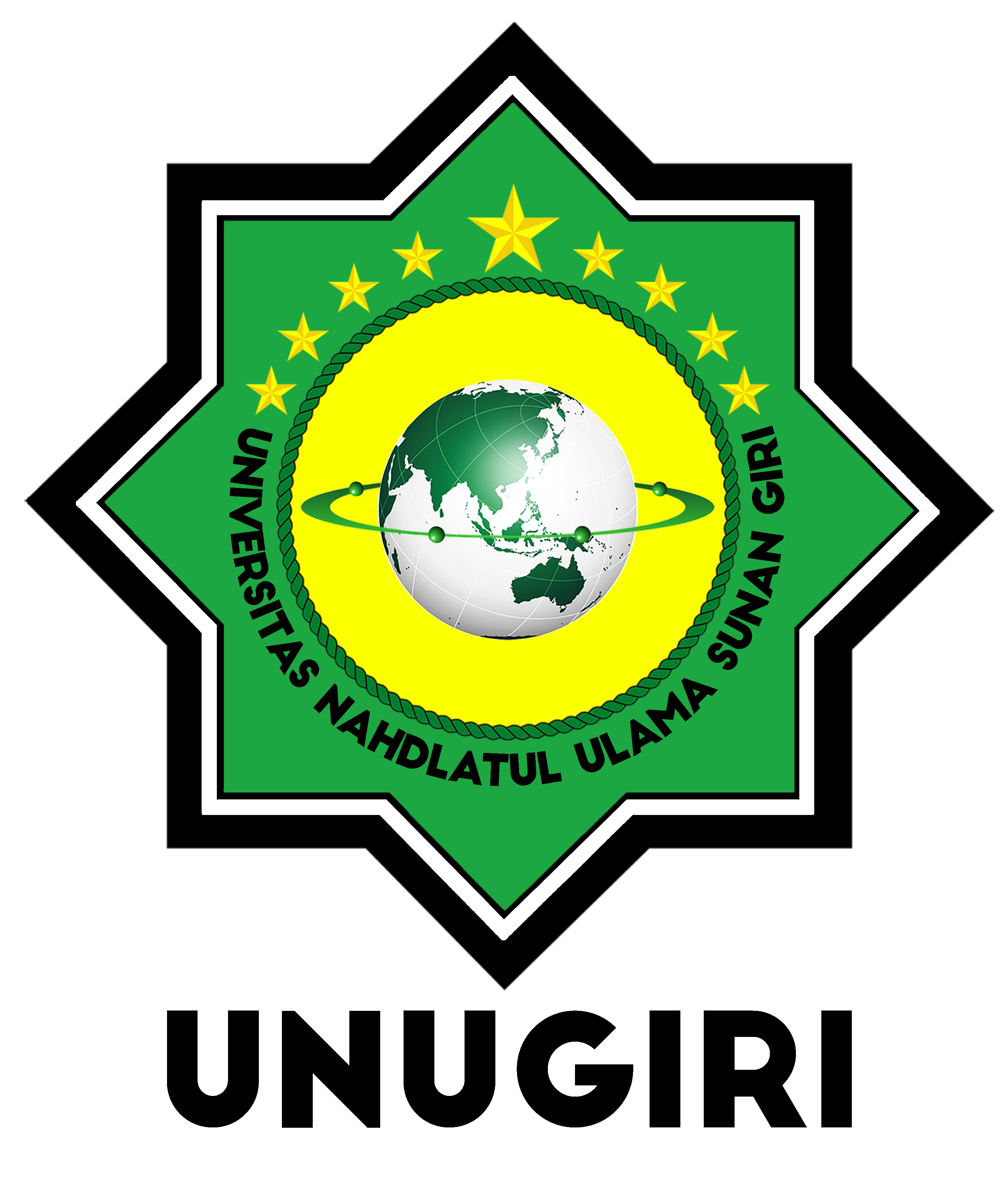Kongruensi dan Homomorfisma (m,n)-Seminearring
 PDF Download: 244
PDF Download: 244
DOI:
https://doi.org/10.32665/james.v7i1.1913Keywords:
kongruensi, seminearring, aljabar universal, semiring terner, congruence, ternary semiring, universal algebraAbstract
Struktur (m,n)-seminearring merupakan generalisasi dari seminearring, dimana operasi biner penjumlahan dan perkalian diganti dengan operasi m-ary dan n-ary, yang keduanya belum tentu komutatif. Tujuan dari penelitian ini adalah membuktikan teorema fundamental homomorfisma dan sifat-sifat kongruensi pada (m,n)-seminearring yang berkaitan dengan homomorfisma. Metode yang digunakan dalam penelitian ini adalah mengadopsi sifat-sifat kongruensi pada n-semigrup, semiring terner, (m,n)-semiring, seminearring, seminearring terner, dan aljabar universal.
References
J. W. Grzymala-Busse, “Automorphisms of Polyadic Automata,” J. ACM, vol. 16, no. 2, pp. 208–219, Apr. 1969, doi: https://doi.org/10.1145/321510.321512.
D. Nikshych and L. I. Vainerman, “Finite Quantum Groupoids and Their Applications,” arXiv, 2000, doi: https://doi.org/10.48550/arXiv.math/0006057.
Z. Stojaković and W. A. Dudek, “Single Identities for Varieties Equivalent to Quadruple Systems,” Discrete Math., vol. 183, no. 1, pp. 277–284, 1998, doi: https://doi.org/10.1016/S0012-365X(97)00060-5.
R. Kerner, “Ternary Algebraic Structures and Their Applications in Physics,” arXiv, p. 15, 2000, [Online]. Available: http://arxiv.org/abs/math-ph/0011023.
L. Vainerman and R. Kerner, “On Special Classes of n-algebras,” J. Math. Phys., vol. 37, no. 5, pp. 2553–2565, 1996, doi: https://doi.org/10.1063/1.531526.
A. P. Pojidaev, “Enveloping Algebras of Filippov Algebras,” Commun. Algebr., vol. 31, no. 2, pp. 883–900, 2003, doi: https://doi.org/10.1081/AGB-120017349.
G. L. M. Charles F. Laywine, Discrete mathematics Using Latin Squares, 1st ed. Wiley, 1998.
W. G. Lister, “Ternary Rings,” Trans. Am. Math. Soc., vol. 154, pp. 37–55, Jan. 1971, doi: https://doi.org/10.2307/1995425.
G. Crombez and J. Timm, “On (n,m)-rings,” Abhandlungen aus dem Math. Semin. der Univ. Hambg., vol. 37, pp. 200–203, 1972, doi: https://doi.org/10.1007/BF02999696.
T. K. Dutta and S. Kar, “On Regular Ternary Semirings,” in Proceedings of the ICM Satellite Conference in Algebra and Related Topics, 2003, pp. 343–355, doi: https://doi.org/10.1142/9789812705808_0027.
M. S. Pop and A. Pop, “Some Properties of Generalized Semirings,” Carpathian J. Math., vol. 24, no. 3, pp. 397–402, 2008.
R. Vijayakumar and D. Bharathi, “On Ternary Seminear Rings,” Int. J. Math. Trends Technol., vol. 66, no. 10, pp. 170–177, 2020, doi: https://doi.org/10.14445/22315373/ijmtt-v66i10p521.
M. S. L. Liedokto, “Struktur (m,n)-seminearring,” in Seminar Nasional Pendidikan Matematika (SNPM) 2023 UNIPA Surabaya, 2023, pp. 540–552, [Online]. Available: https://snpm.unipasby.ac.id/prosiding/index.php/snpm/article/view/191.
V. N. Dixit and S. Dewan, “Congruence and Green’s Equivalence Relation on Ternary semigroup,” Commun. Ser. A1 Math. Stat., vol. 46, pp. 103–117, 1997, doi: https://doi.org/10.1501/Commua1_0000000429.
A. Chronowski, “Congruences on Ternary Semigroups,” Ukr. Math. J., vol. 56, no. 4, pp. 662–681, 2004, doi: 10.1007/s11253-005-0010-4.
S. Kar and B. Maity, “Congruences On Ternary Semigroups,” J. Chungcheong Math. Soc., vol. 20, pp. 191–201, Jan. 2007.
C. Somsup and U. Leerawat, “Congruences and Homomorphisms on n-ary Semigroups,” Int. J. Math. Comput. Sci., vol. 15, no. 2, pp. 671–682, 2020.
J. S. Golan, Semirings and Their Applications, 1st ed. Haifa: Springer, Dordrecht, 1999.
S. E. Alam, S. Rao, and B. Davvaz, “(m,n)-semirings and a Generalized Fault-tolerance Algebra of Systems,” J. Appl. Math., vol. 2013, p. 482391, 2013, doi: https://doi.org/10.1155/2013/482391.
F. Hussain, M. Tahir, S. Abdullah, and N. Sadiq, “Quotient Seminear-rings,” Indian J. Sci. Technol., vol. 9, no. 38, 2016, doi: https://doi.org/10.17485/ijst/2016/v9i38/89115.
R. Vijayakumar and A. D. Bharathi, “Quotient Ternary Seminear Rings,” Malaya J. Mat., vol. 9, no. 1, pp. 715–719, 2021, doi: https://doi.org/10.26637/mjm0901/0125.
M. F. Fatimah, F. Hasnani, and N. P. Puspita, “Quotient Seminear-rings of the Endomorphism of Seminear-rings,” vol. 16, no. 3, pp. 887–896, 2022.
C. Bergman, Universal Algebra Fundamentals and Selected Topics. Ames: CRC Press, 2012.
K. Denecke and S. L. Wismath, Universal Algebra and Applications in Theoretical Computer Science. New York, 2002.
W. A. Dudek, K. Glazek, and B. Gleichgewicht, “A Note on the Axioms of n-groups,” Colloq. Math. Soc. János Bolyai, pp. 195–202, 1977, doi: 10.1177/030641909702500409.
B. Gleichgewicht and K. Głazek, “Remarks on n-groups as Abstract Algebras,” Colloq. Math., vol. 17, no. 2, pp. 209–219, 1967.
W. G. van Hoorn and B. van Rootselaar, “Fundamental Notions in the Theory of Seminearrings,” Compos. Math., vol. 18, pp. 65–78, 1967.
T. W. Hungerford, Algebra, 1st ed. New York: Springer, 1974.
C. Pelea, “Hyperrings and α⁎-relations. A General Approach,” J. Algebr., vol. 383, pp. 104–128, 2013, doi: https://doi.org/10.1016/j.jalgebra.2013.02.025.
S. Mirvakili and B. Davvaz, “Characterization of Additive (m,n)-semihyperrings,” Kyungpook Math. J., vol. 55, no. 3, pp. 515–530, 2015, doi: 10.5666/KMJ.2015.55.3.515.
Downloads
Published
How to Cite
Issue
Section
Categories
License
Copyright (c) 2024 Journal of Mathematics Education and Science

This work is licensed under a Creative Commons Attribution-NonCommercial-ShareAlike 4.0 International License.
Authors who publish with this journal agree to the following terms:
- Authors retain copyright and grant the journal right of first publication with the work simultaneously licensed under a Creative Commons Attribution License that allows others to share the work with an acknowledgment of the work's authorship and initial publication in this journal.
- Authors are able to enter into separate, additional contractual arrangements for the non-exclusive distribution of the journal's published version of the work (e.g., post it to an institutional repository or publish it in a book), with an acknowledgment of its initial publication in this journal.
- Authors are permitted and encouraged to post their work online (e.g., in institutional repositories or on their website) before and during the submission process, as it can lead to productive exchanges, as well as earlier and greater citation of published work
 PDF Download: 244
PDF Download: 244















